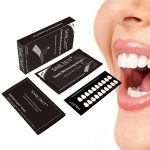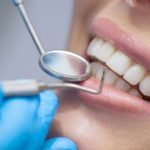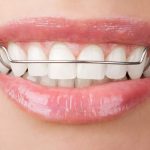How Long Does It Take to Whiten Teeth? A Comprehensive Guide to Achieving a Brighter Smile
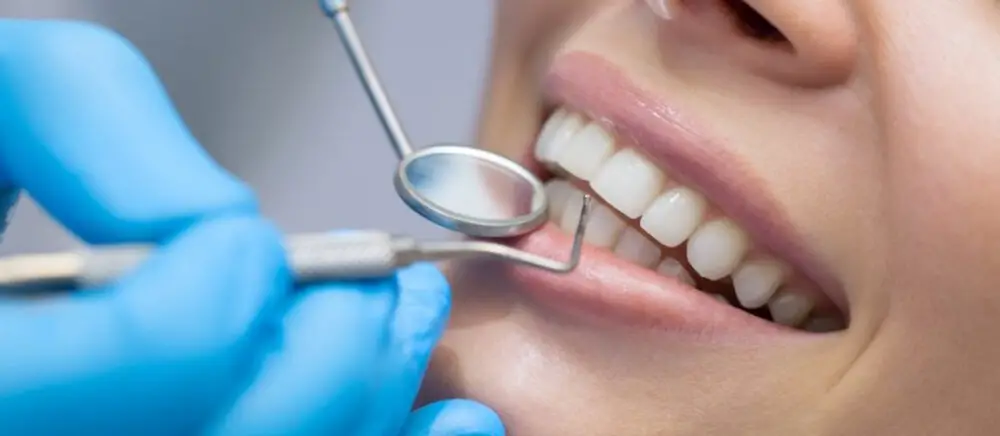
A bright, white smile is often considered a symbol of good health, youthfulness, and beauty. However, factors such as age, diet, and lifestyle habits can cause teeth to become discolored and stained over time. Fortunately, there are many options available to help whiten teeth and restore their natural brightness. But with so many products and treatments on the market, it can be overwhelming to know where to start. In this comprehensive guide, we’ll explore the various methods of teeth whitening, how long they take to work, and what factors can impact their effectiveness. Teeth whitening can range from simple at-home remedies to professional treatments provided by a dentist. Some of the most popular methods include whitening toothpaste, over-the-counter whitening strips, custom-fitted trays with bleaching gel, and in-office treatments like laser whitening. The effectiveness of each method can depend on various factors such as the severity of discoloration, the cause of the staining, and the individual’s overall dental health. Understanding the different options available can help you make an informed decision on which method is best for achieving a brighter, whiter smile.
Teeth discoloration is a common dental issue that can cause embarrassment and self-consciousness. Discoloration can occur due to a variety of reasons, including poor dental hygiene, aging, dietary habits, and smoking. Certain medications, such as tetracycline, can also cause teeth discoloration. Discoloration can range from mild yellowing to dark brown or gray stains, depending on the cause. While regular brushing and flossing can help prevent discoloration, professional teeth whitening treatments may be necessary to achieve a brighter, more vibrant smile.
Teeth whitening has become increasingly popular in recent years, with a wide range of options available to consumers. One of the most common methods is using over-the-counter whitening strips or gels, which can take anywhere from a few days to a few weeks to produce noticeable results. Another option is in-office treatments, which typically involve the use of a high-concentration bleaching agent and can produce dramatic results in just one or two visits. For those looking for a more natural approach, there are also a variety of at-home remedies that can be used, such as brushing with baking soda or using activated charcoal. Ultimately, the best teeth whitening option will depend on each individual’s unique needs and preferences, as well as the severity of their discoloration.
Professional Teeth Whitening

Professional teeth whitening is a popular cosmetic dentistry treatment that helps individuals achieve a brighter, more radiant smile. Unlike at-home whitening kits, professional teeth whitening is performed by a dental professional who uses advanced techniques and equipment to achieve optimal results. This treatment is often recommended for individuals who have stubborn stains on their teeth that cannot be removed through regular brushing or whitening toothpaste. Professional teeth whitening can also be customized to meet the unique needs and goals of each patient, ensuring that they achieve the perfect shade of white that they desire. One of the main benefits of professional teeth whitening is that it is a fast and effective solution for achieving a brighter smile. Unlike at-home whitening kits that can take weeks or even months to achieve noticeable results, professional teeth whitening can typically be completed in just one or two appointments. During the treatment, a dental professional will apply a powerful whitening solution to the teeth and use a special light or laser to activate the solution and help it penetrate the enamel. The entire process usually takes less than an hour and can result in teeth that are several shades whiter than before. With professional teeth whitening, individuals can enjoy a more youthful, vibrant smile and feel more confident about their appearance.
In-office teeth whitening is a cosmetic dental procedure that involves the use of a bleaching agent to remove stains and discoloration from the teeth. The process typically takes between 60 and 90 minutes and is performed by a dental professional in a clinical setting. Before the procedure begins, the dentist will clean the patient’s teeth to remove any debris or plaque that may interfere with the bleaching agent. The bleaching agent is then applied to the teeth and activated with a special light or laser. This causes a chemical reaction that breaks down the stains and discoloration, leaving the teeth several shades lighter. The procedure is safe and effective, but some patients may experience temporary sensitivity following treatment. Regular brushing, flossing, and routine dental visits can help maintain the results of the procedure.
The typical time frame for teeth whitening treatment varies depending on the method chosen. In-office teeth whitening procedures usually take about an hour to complete, while at-home treatments can take anywhere from a few days to a few weeks to see results. Whitening strips and gels typically require daily use for a certain amount of time, while whitening toothpaste and mouthwashes can be used as part of a regular oral hygiene routine. It’s important to note that the effectiveness of teeth whitening treatments also varies based on the severity and cause of tooth discoloration. Consulting with a dental professional can help determine the best treatment plan and expected time frame for achieving a brighter smile.
Professional teeth whitening is a popular cosmetic dental procedure that can provide a brighter and more attractive smile. One of the main advantages of professional teeth whitening is that it is a fast and effective way to remove stains and discoloration caused by aging, smoking, or consuming certain foods and drinks. Moreover, professional whitening treatments are usually safer and produce better results than over-the-counter products. However, professional teeth whitening can be expensive and may cause sensitivity or discomfort in some patients. Additionally, the results of professional whitening are not permanent, and patients may need to undergo touch-up treatments to maintain their brightened smile.
AtHome Teeth Whitening
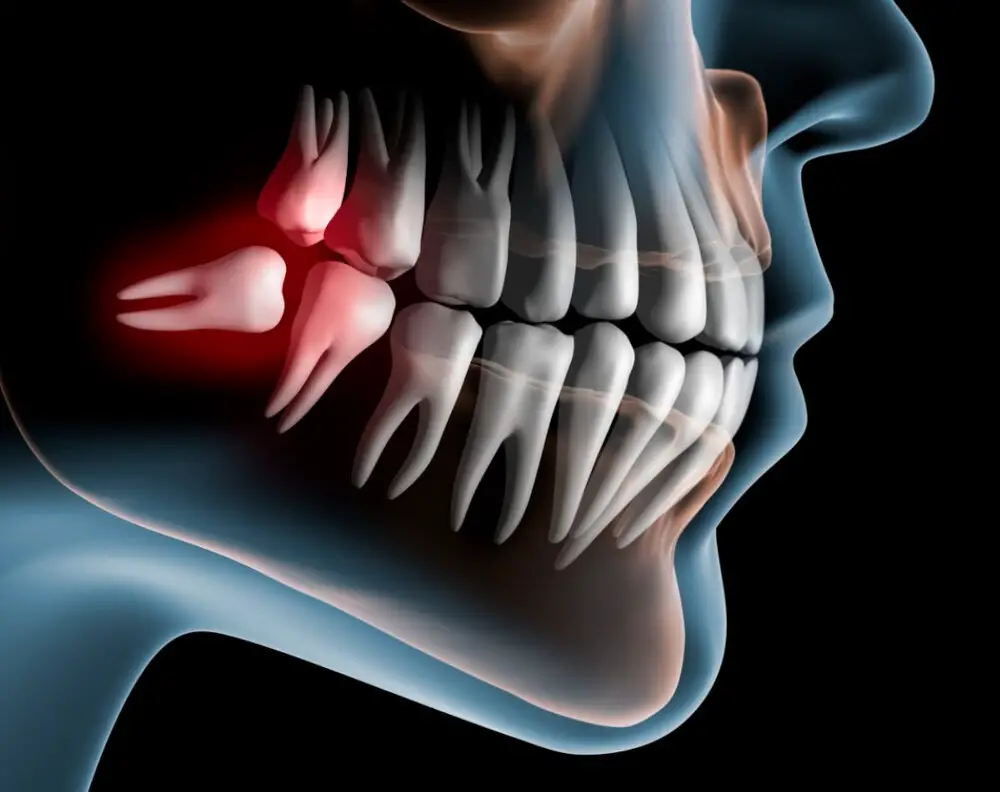
At-home teeth whitening has become increasingly popular in recent years due to its convenience and affordability. With many different options available, it’s no wonder that people are opting to whiten their teeth from the comfort of their own homes. One of the most popular methods is the use of whitening strips or trays that are filled with a bleaching gel. These strips or trays are worn for a certain amount of time each day, usually between 30 minutes to an hour, for several weeks until the desired result is achieved. At-home teeth whitening is a great option for those who are looking to brighten their smile without having to spend a lot of money or time at the dentist’s office. However, it’s important to note that at-home teeth whitening may not be as effective as professional treatments. The concentration of the bleaching agent in over-the-counter products is lower than what is used in a dental office, which means that it may take longer to see results. Additionally, at-home treatments may not be suitable for everyone, especially those with sensitive teeth or gum disease. If you’re considering at-home teeth whitening, it’s important to speak with your dentist first to determine if it’s a safe and effective option for you. Overall, at-home teeth whitening can be a great way to achieve a brighter smile, but it’s important to do your research and consult with a dental professional before starting any treatment.
At-home teeth whitening options have become increasingly popular due to their convenience and affordability. There are numerous options available, including whitening strips, trays, gels, and pens. Whitening strips are thin, flexible strips coated with a whitening gel that are placed directly on the teeth for a specified period of time. Whitening trays are custom-molded to fit the individual’s teeth and are filled with a whitening gel that is worn for a certain amount of time each day. Whitening gels are applied directly to the teeth with a brush or pen, and the individual can leave it on for a certain amount of time before rinsing. It’s important to note that the effectiveness of at-home teeth whitening varies depending on the individual and the product used.
The typical time frame for teeth whitening treatment varies based on the method used. Over-the-counter products, such as whitening toothpaste or strips, may take several weeks to show results. Professional treatments, such as in-office bleaching or take-home trays provided by a dentist, can show results in as little as one session or up to several weeks. The length of time also depends on the severity of the discoloration and the desired shade. It is important to follow the recommended treatment plan and maintain good oral hygiene habits to ensure long-lasting results. Consulting with a dental professional can help determine the most effective and efficient treatment plan for achieving a brighter smile.
At-home teeth whitening kits have become increasingly popular due to their convenience and affordability. One of the major advantages of at-home teeth whitening is that it can be done from the comfort of your own home, saving you time and money on expensive dental procedures. Additionally, many of these kits are easy to use and can provide noticeable results within a few weeks. However, there are also some downsides to at-home teeth whitening. Some kits may not be as effective as professional treatments and can cause sensitivity or irritation to the gums and teeth. It’s important to follow the instructions carefully and consult with a dentist if you experience any discomfort. Additionally, results may vary depending on the severity of the staining and the individual’s oral hygiene habits.
Natural Teeth Whitening
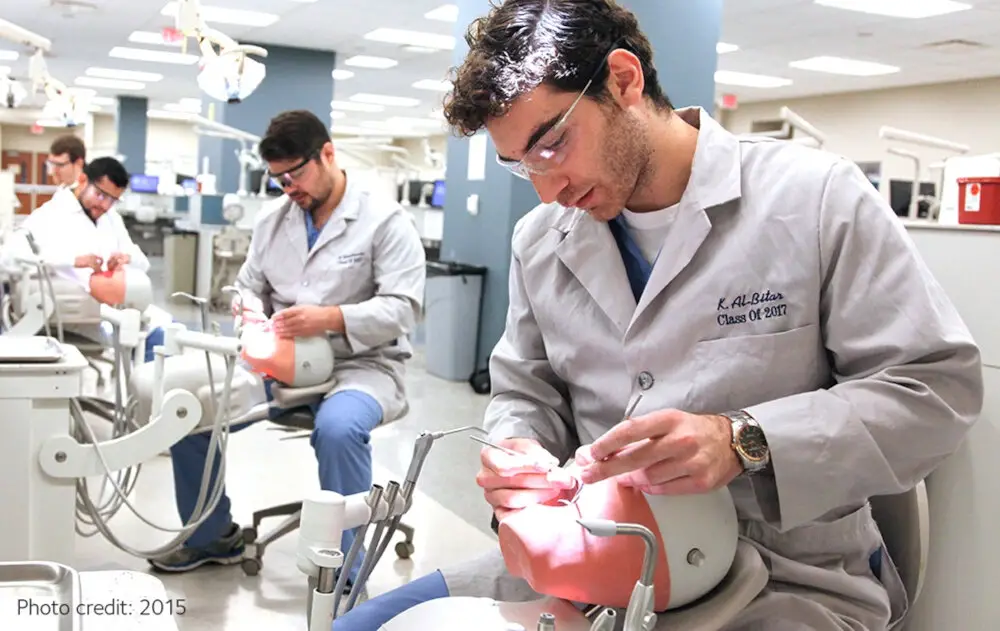
Natural teeth whitening is a great alternative to commercial products that can be harsh and expensive. Many people are turning to natural remedies to achieve a brighter smile without the use of chemicals. One of the most popular natural teeth whitening solutions is baking soda. Baking soda is a mild abrasive that can help remove surface stains on teeth. It can be mixed with water to form a paste and applied to teeth with a toothbrush. Baking soda can be used once or twice a week to help maintain a bright smile. Another natural teeth whitening solution is oil pulling. Oil pulling is an ancient practice that involves swishing oil around in your mouth for several minutes. Coconut oil is a popular choice for oil pulling because it has antimicrobial properties that can help kill bacteria in the mouth. Oil pulling is believed to help remove surface stains on teeth and improve overall oral health. It can be done once a day for 10-20 minutes at a time. However, it is important to note that while natural teeth whitening methods can be effective, they may take longer to produce results compared to commercial products.
Natural teeth whitening remedies are becoming increasingly popular due to their affordability and effectiveness. Oil pulling is one such remedy that involves swishing oil, usually coconut or sesame, in the mouth for 10-20 minutes before spitting it out. This process helps remove bacteria and stains from the teeth, resulting in a brighter smile. Baking soda is another popular remedy that can be used as a toothpaste or mixed with water to form a paste. It works by scrubbing away surface stains and neutralizing acids in the mouth. Other natural remedies include hydrogen peroxide, apple cider vinegar, and activated charcoal. While these remedies can be effective, it’s important to use them in moderation and not rely on them as a replacement for regular dental care.
The typical time frame for teeth whitening treatment can vary depending on the method used and the severity of the discoloration. Over-the-counter whitening treatments such as strips and gels may take up to two weeks to show noticeable results, while professional in-office treatments with laser or UV light can produce results in as little as one hour. Take-home whitening kits provided by dentists may take two to four weeks to achieve desired results. However, it’s important to note that the longevity of the whitening effects also varies depending on factors such as oral hygiene, diet, and lifestyle habits. It’s recommended to discuss options with a dental professional to determine the best treatment plan and expected time frame for achieving a brighter smile.
Natural teeth whitening can be an effective and affordable way to achieve a brighter smile. One of the main advantages is that it uses natural ingredients that are readily available and safe to use. This means that you don’t have to worry about the harmful chemicals that may be present in commercial whitening products. Additionally, natural remedies can help to remove surface stains on teeth and improve overall oral health. However, since natural teeth whitening remedies often take longer to see results, it may require patience and consistency to achieve the desired outcome. Furthermore, some natural ingredients may not be suitable for all individuals, and if overused, they can damage tooth enamel. Thus, it’s important to consult with a dental professional before starting any whitening treatment, natural or otherwise.
Maintaining Teeth Whitening Results

Maintaining Teeth Whitening Results is an essential part of the teeth whitening process. Once you have achieved a brighter smile, you need to take steps to ensure that your teeth remain white for an extended period. First and foremost, you should avoid foods and drinks that stain teeth, such as coffee, tea, red wine, and dark-colored fruits. If you cannot avoid consuming these items, you should rinse your mouth with water immediately after eating or drinking them to prevent staining. Additionally, you should continue to brush and floss your teeth regularly to remove any surface stains and prevent plaque buildup, which can cause discoloration. Another way to maintain teeth whitening results is to use whitening toothpaste or mouthwash. These products contain ingredients that help to remove surface stains, so they are an excellent addition to your oral hygiene routine. You may also consider using whitening strips or trays periodically to touch up your teeth. However, it is important not to overuse these products, as they can cause tooth sensitivity and damage to your enamel. Lastly, you should visit your dentist regularly for cleanings and checkups to ensure that your teeth remain healthy and free of stains. By following these tips, you can maintain a bright, white smile for years to come.
Maintaining a brighter smile requires consistent oral hygiene practices. Brush your teeth twice a day using a fluoride toothpaste and floss daily to remove plaque and food debris that can cause stains. Avoid foods and drinks that can discolor your teeth such as coffee, tea, red wine, and soda. If you can’t resist, use a straw to minimize contact with your teeth. Rinse your mouth with water after consuming these items to wash away the staining agents. Regular dental checkups and cleanings can also help remove surface stains and keep your teeth healthy. Additionally, consider using whitening toothpaste or at-home whitening kits to maintain a brighter smile.
After undergoing a teeth whitening procedure, it’s essential to maintain the results by taking good care of your teeth. Certain factors can cause teeth to discolor again, such as poor oral hygiene, smoking, consuming dark-colored foods and beverages, and aging. Plaque buildup can lead to staining, so it’s crucial to brush and floss regularly to remove any debris that could accumulate on your teeth. Smoking is another culprit that can cause teeth to yellow or brown due to the nicotine and tar found in cigarettes. Additionally, drinks like coffee, tea, and red wine, as well as foods like curry and tomato sauce, can leave surface stains on the enamel, leading to discoloration. Finally, as we age, the outer layer of our teeth naturally wears down, revealing the yellowish dentin underneath, which can make teeth appear duller.
Teeth whitening procedures have become increasingly popular due to their ability to improve the appearance of discolored or stained teeth. There are various teeth whitening options available, including in-office procedures, at-home treatments, and over-the-counter products. In-office treatments typically involve the use of light-activated bleaching agents and can provide immediate results in just one visit, lasting up to a year with proper maintenance. At-home treatments can take longer to achieve results, ranging from a few days to several weeks, depending on the type of product used and the severity of discoloration. Over-the-counter products, such as whitening toothpaste or strips, can take several weeks to months to achieve noticeable results. It is important to consult with a dental professional before starting any whitening treatment to ensure safety and effectiveness.
Choosing the right teeth whitening method can be a daunting task, as there are many options available in the market. It is essential to consider individual needs and goals when making a decision. For those with sensitive teeth, a gentler approach such as using a toothpaste or mouthwash with whitening properties may be the best option. For those looking for dramatic results quickly, in-office treatments or at-home kits with higher concentrations of whitening agents may be the way to go. It is important to consult with a dental professional before starting any whitening treatment to ensure that it is safe and effective for your specific situation. Ultimately, a brighter smile can be achieved with the right teeth whitening method tailored to individual needs and goals.
Conclusion

In conclusion, achieving a brighter smile through teeth whitening is a process that requires time, patience, and consistency. The length of time it takes to see results may vary depending on the method used and the individual’s teeth condition. However, it is essential to prioritize oral hygiene and consult a dental professional before embarking on any teeth whitening regimen. While the results may not be immediate, a brighter, more confident smile is well worth the effort and investment. So, don’t hesitate to take the first step towards achieving a dazzling smile that will leave a lasting impression.

